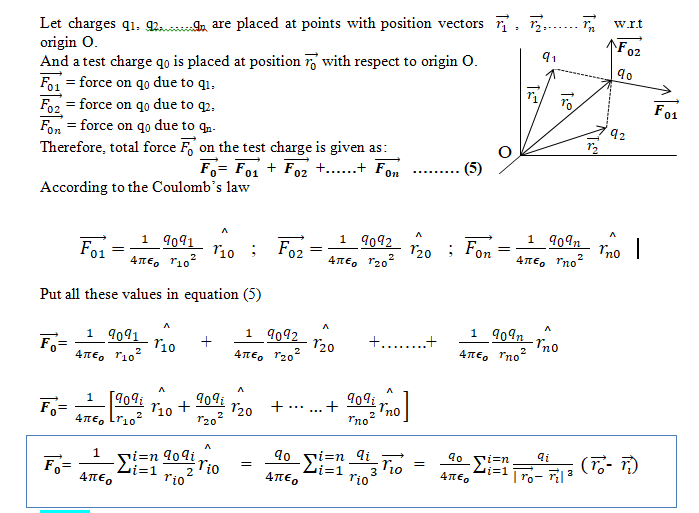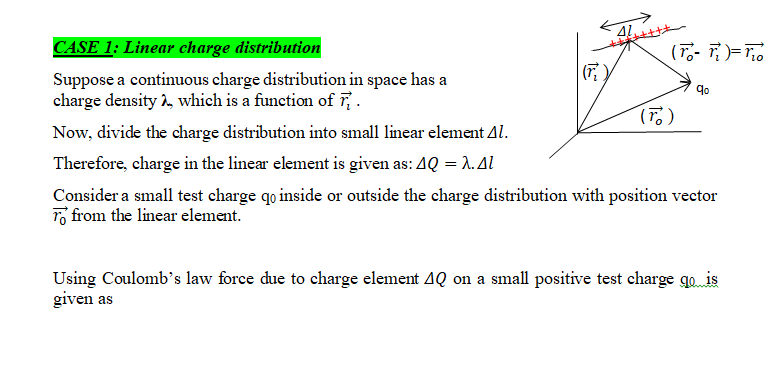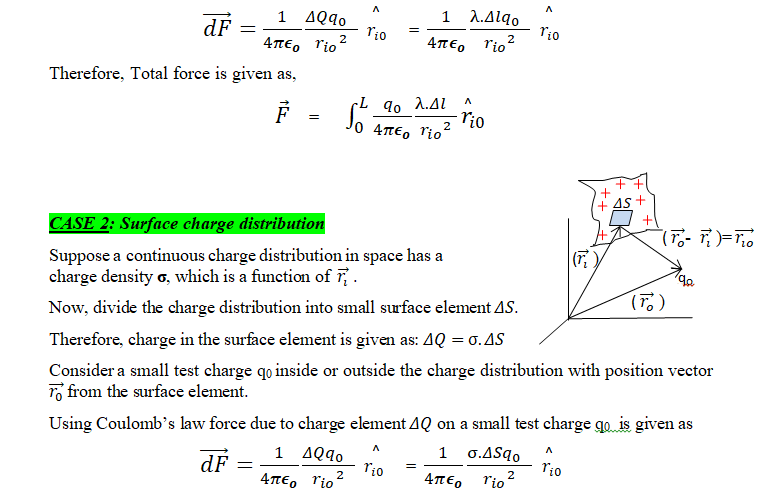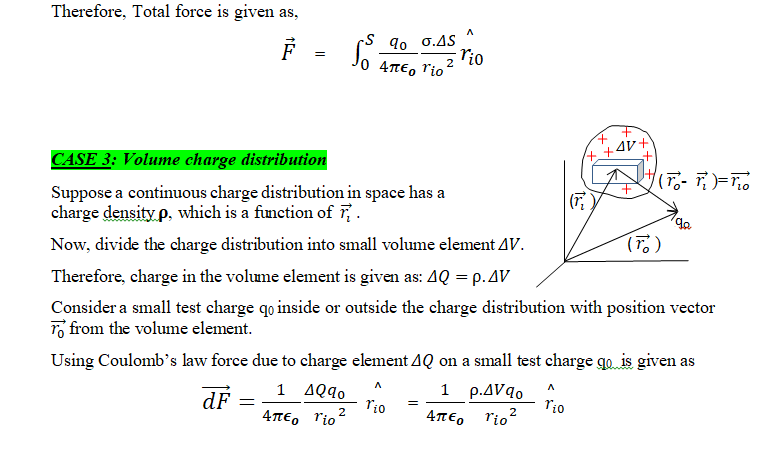Principle of Superposition : Chapter 1 Electric Charges and Fields Class 12 CBSE Physics L4
Chapter 1
Electric Charges and Fields
Topics Covered : Principle of Superposition , Continuous charge distribution , Force due to continuous charge distribution
Forces between multiple charges: Principle of Superposition
“Total force on any charge due to a number of other charges at rest is the vector sum of all the forces on that charge due to other charges, taken one at a time. The force due to individual charge is remains unaffected due to the presence of other charges.”

NOTE:
The direction of net force can be determined by the polygon law of vectors.
Continuous charge distribution
As we all know that the charge is always quantized. Pertaining to the smallest amount of charge is that it can exist as +e or –e. It is the charge present on an electron and proton.
The total space covered by any charge in dimensions is very small as compared to the distance between the two charges from an observation point. That observation point can be taken as a point charge.
In a continuous charge distribution, all the charges are closely bound together i.e. having very less space between them. But this closely bound system doesn’t means that the electric charge is uninterrupted. It clears that the distribution of separate charges is continuous, having a minor space between them.
There are three different ways in which charges can be distributed:
- Linear charge distribution.
- Surface charge distribution.
- Volume charge distribution.
Linear charge distribution:
The linear charge distribution is when the charges get distributed uniformly along a length, like around the circumference of a circle or along a straight wire, linear charge distribution is denoted by the symbol λ.

The linear charge distribution is measured in Coulombs per meter.
Surface charge distribution:
When a charge is distributed over a specific area, like the surface of a disk, it is called as surface charge distribution, it is denoted by the Greek letter σ.

The surface charge distribution is measured Coulombs per square meter or Cm-2.
Volume charge distribution:
When a charge is distributed uniformly over a volume it is said to be volume charge distribution, like distribution of charge inside a sphere, or a cylinder. It is denoted by ρ.

The volume charge distribution is measured in coulombs per cubic meter or Cm-3.
Force due to continuous charge distribution




